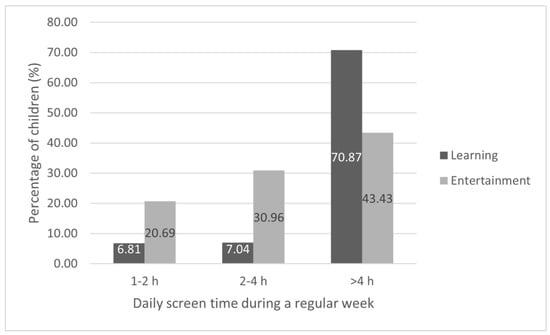Does overexposure to screens have an impact on children's creativity? We'll try to answer that question in this article. These days, it's almost impossible to imagine a world without screens. From the classroom to the home, tablets, smartphones and computers have become commonplace tools in the daily lives of adults and children alike. While these technologies offer undeniable advantages, they also raise concerns about their impact on children's creative development. How do screens influence the creativity of young minds? And how can we, as parents, educators and members of society, guide our children towards a balanced and beneficial use of screens? This article explores these questions and suggests strategies for encouraging creativity away from screens.
The impact of screens on children's creativity
According to a recent study, excessive consumption of added sugar is associated with reduced creativity in preadolescent children REF[^1^]. In addition, another study showed that the majority of children are exposed to screens during meals, which is a risk factor for obesity REF[^2^]. Obesity can in turn affect a child's creativity and general well-being.
What are the effects of screens on children?
Screens can have a variety of effects on children, from distraction to reduced time spent on creative activities such as drawing, reading or outdoor play. What's more, overexposure to screens can lead to eyestrain, sleep disorders and reduced attention span.
How can screens have a negative impact on children's creativity?
Screens can limit the time children spend exploring their environment, interacting with other children and participating in creative activities. One study has shown that children's exploratory behaviors are essential to creativity. REF [^3^]. When children spend too much time in front of screens, they can miss out on various opportunities for exploration and creative play.
Encouraging creativity away from the screen in young children
Open spaces for play and exploration
Encouraging reading
Creative activities
Exploring nature
Creativity and self-esteem in school-age children
Creativity is closely linked to children's self-esteem. Children who feel confident in their creative abilities are more likely to take risks, try new things and develop their imagination.
Are children's creative skills compromised by the use of screens?
Excessive use of screens can compromise the development of children's creativity. However, with moderate and conscious use, screens can be a valuable tool for complementing and enriching children's creative experiences.
How do you choose the best educational tablet when the screen is omnipresent?
When choosing an educational tablet for children, it's advisable to look for apps that encourage creativity, problem-solving skills and critical thinking.
Age groups affected by screen use
Infants and toddlers
Before the age of 3, infants and young children should absolutely not be exposed to screens. At this age, face-to-face interaction and physical play are essential for development.
Older children
School-age children
Pre-teens
Teenagers
Between the ages of 12 and 16, Internet access is possible on a limited basis, of course, and always under adult supervision.
Young people
From the age of 16 to 18, children can access the Internet with a little more freedom. The presence of an adult during browsing is no longer mandatory. However, this remains part of an educational and informative approach that will help them in their learning process.
Good practice examples for children's use of screens
Educational and sports app
Physical games as an alternative to screen exposure
In conclusion,
Screens have become an integral part of our daily lives. It is therefore the responsibility of parents and educators to ensure that their use is beneficial to children's development. By making informed choices and balancing screen time with other activities, we can ensure that children's creativity and imagination are not compromised. It is therefore important to find this balance to ensure children's healthy and creative development.
Disclaimer:
The information provided in this article is based on scientific research and is intended for educational purposes. It is always recommended to consult a health or education professional for specific advice.
References
Footnotes
REF [^1^] : Added sugar and dietary fiber consumption are associated with creativity in preadolescent children ↩
REF [^2^] : The Impact of Digital Screen Time on Dietary Habits and Physical Activity in Children and Adolescents ↩
REF [^3^] : Examining the impact of children's exploration behaviors on creativity. ↩

